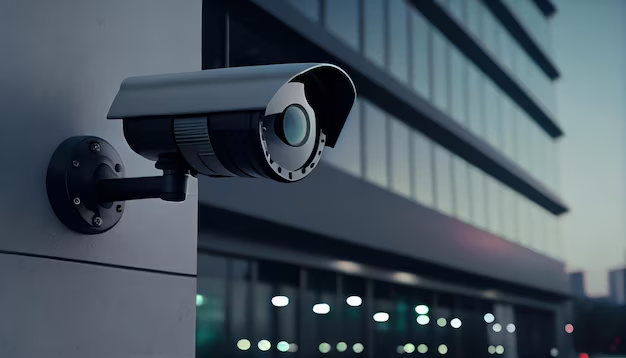Tech
Enhancing Security with IP Cameras: The Smart Surveillance Solution

In the fast-evolving world of technology, securing personal and commercial spaces has become a paramount concern. The advent of smart surveillance, particularly through the ip camera, has revolutionised the way organisations and individuals approach security. The ease of access, higher quality of imagery, and the advanced features of IP cameras make them an ideal choice for anyone looking to bolster their surveillance system.
The Advantages of Utilising IP Cameras in Surveillance
One of the most significant advantages of an IP camera is its ability to send and receive data via a network and the internet. Unlike traditional analog CCTV cameras, IP cameras provide sharper, higher resolution images and offer greater flexibility when it comes to installation and monitoring. The higher resolution ensures that finer details are captured, making it possible to positively identify individuals and track movements with great accuracy.
Integration and Scalability
As a digital device, an IP camera can easily be integrated into existing computer networks. This allows for a wider deployment of cameras without the need for extensive new cabling. If a business grows or the scope of surveillance needs to change, integrating additional cameras into the system is straightforward and cost-effective. The scalability of IP-based surveillance systems makes them a future-proof investment for growing businesses.
Remote Access and Management
A hallmark of smart surveillance through IP cameras is the ability to access and manage the system remotely. Authorised personnel can stream live footage from cameras, review recorded videos, and adjust camera settings from anywhere in the world, provided they have internet access. This aspect of remote management adds a layer of convenience and responsiveness to security protocols.
Advanced Analytics and Automation
Modern IP cameras often come with built-in analytics. These can include motion detection, line crossing detection, and even facial recognition. The cameras can be programmed to alert when certain criteria are met, automating the surveillance process and enhancing security response times.
Building a Robust IP Camera Network
To ensure the best performance from an IP-based surveillance system, each component must be carefully selected and properly installed. This involves not just the cameras themselves but also the supporting network infrastructure, including a reliable network switch. A high-quality network switch can manage the data traffic from multiple cameras effectively, preventing bottlenecks and ensuring a stable and fast network.
An optimised network infrastructure is particularly important for organisations that rely on real-time surveillance data for security operations. The network switch forms the backbone of surveillance, connecting various devices and ensuring seamless communication between the cameras and the central monitoring stations.
Wireless Security Cameras: Enhancing Flexibility in Surveillance
The proliferation of wireless security cameras has added another dimension to smart surveillance. The absence of cables provides much more flexibility in where cameras can be placed, especially in areas where it would be difficult or intrusive to install wired connections.
Wireless cameras can be quickly repositioned to address shifting surveillance needs or to adapt to changing physical environments, such as construction sites or temporary venues. Moreover, wireless technology enables the integration of cameras into systems where running cables is virtually impossible, such as in historical buildings or across large open areas.
With the ongoing advancements in wireless technology, the reliability and image quality of wireless security cameras have improved considerably. They now offer a viable alternative to wired cameras without major trade-offs in performance, and their convenience often justifies the slightly higher cost.
Considerations for Effective IP Camera Implementation
While the benefits of IP cameras for smart surveillance are clear, there are several considerations that should not be overlooked when implementing these systems:
Security of the Surveillance Network
The very nature of IP cameras – being internet-connected – makes them potentially vulnerable to cyber threats. It is crucial that the surveillance network is secured with robust cybersecurity measures, including secure passwords, encryption, and regular software updates to protect against unauthorised access.
Storage and Data Management
High-resolution footage requires significant storage space. Organisations must plan for adequate storage solutions, whether through on-site servers, cloud services, or a combination of both. Additionally, data management policies need to be in place to comply with privacy laws and regulations, particularly when recording in public spaces or areas frequented by customers and employees.
Legal Compliance
There are legal implications to consider when setting up surveillance systems. These can include regulations around consent to be filmed, data protection, and the fair use of surveillance footage. It’s essential to understand and comply with these laws to avoid legal repercussions.
Conclusion
As threats to security become more complex, the need for advanced and smart surveillance systems grows. IP cameras offer a versatile and powerful solution for enhancing security across diverse environments. Their high-resolution imaging, remote accessibility, and integration capabilities make them an essential component of modern security strategies. By building a robust network infrastructure, including a dependable network switch, and considering wireless security camera options, organisations can create a surveillance ecosystem that is not only highly effective but also flexible enough to adapt to future needs. With careful planning and consideration of legal, ethical, and security issues, IP cameras can serve as a cornerstone in the protection of assets and individuals alike.










